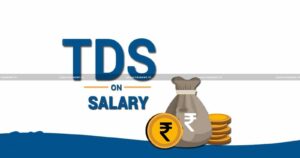 TDS is deducted at the time of actual payment of salary and not during the accrual of salary
TDS is deducted at the time of actual payment of salary and not during the accrual of salary
Usually, every employer deducts Tax Deducted at Source (TDS) from the salary, what is known as the ‘average rate of income tax’ of the employee for the year. It is denoted as the average income tax rate equal to income tax liability (arrived at based on slab rates) divided by the employee’s predictable income for the assessment year.
Archit Gupta, Founder & CEO of Clear, said, “Filing TDS returns is mandatory for all the persons who have deducted TDS. TDS return is to be submitted quarterly, and various details need to be furnished like TAN, amount of TDS deducted, type of payment, PAN of deductee, etc. Also, different forms are prescribed for filing returns depending upon the TDS deduction purpose.”
As per Section 206AA of the Income Tax Act, if you do not furnish your Permanent Account Number (PAN) to the deductor, then the deductor shall deduct TDS at the higher of the rate prescribed in the relevant provisions of the Act or at 20%.
How TDS is calculated on salary
Under Section 192, TDS is deducted at the time of actual payment of salary and not during the accrual of salary. It means Tax will be deducted when your employer pays your salary, whether in advance, on time, or in arrears (late payment).
Gupta says, “In case your estimated salary is not more than the basic exemption limit, tax payable will be zero and hence, TDS will not be deducted. This rule is applicable even to those who do not have a PAN.”
The table below shows the basic exemption limit as per the age that does not require TDS to be deducted:
Calculation of taxable Income of the employee
Step 1: First, the employer estimates the employee’s salary for the relevant financial year. This should include basic pay, dearness allowance, perquisites granted by the employer, other allowances granted by the employer like HRA, LTA, meal coupons, etc., EPF contributions, bonus, commissions, gratuity, salary from the previous employer, if any, etc.
Step 2: In the next step, the employer calculates exemptions under Section 10 of the Income Tax Act. The exemptions can apply to allowances like HRA, travel expenses, uniform expenses, children’s education allowances, etc. Also, reduce the amount of professional Tax paid, entertainment allowance and standard deduction of Rs 50,000.
Step 3: The employer reduces such exemption from the gross monthly income, and the net amount will be treated as the taxable salary income.
Step 4: If the employee has provided information about other incomes, such as rental income from house property, bank deposits, etc., such amounts should be added to the net taxable salary. Further, the interest paid on housing loans is deducted from the house property income, but if there is no income from the house property, there will be a negative figure under the head’s income from the house property. After adding or reducing the said amounts, the calculated figure will be the employee’s gross total income.
Step 5: Now, the employer reduces the investments for the year, which fall under Chapter VI-A of the Income Tax Act declared by the employees as per the investment declaration submitted. The declaration may include the amounts of investments such as PPF, employee’s provident fund, ELSS mutual funds, NSC, and Sukanya Samridhi account. It may also include income expenditures such as home loan repayment, life insurance premiums, NSC, Sukanya Samridhi account, etc. Similarly, the employer allows a deduction under various other sections, such as Section 80D, 80G, etc.
Gupta said that from FY 2023-24, the new tax regime is the default tax regime and your tax calculation will be done as per the new regime tax rates. If you wish to opt for the old tax regime, you will have to intimate the same to the employer when making an investment declaration. You can exercise this option each year between the old and new tax regimes. The employer may deduct his/her income tax according to the tax regime selected. “Also, if the employee has declared to calculate income tax as per the new tax regime, then the Income Tax Act does not allow the majority of the exemptions and deductions allowed in the old tax regime. Hence, the employer will calculate the net taxable income per the income tax regime chosen by the employee,” he added.
Source: https://www.businesstoday.in/personal-finance/tax/story/how-is-tds-calculated-on-employees-salaries-399904-2023-09-27
© 2018 CA Chandan Agarwal. All rights reserved.